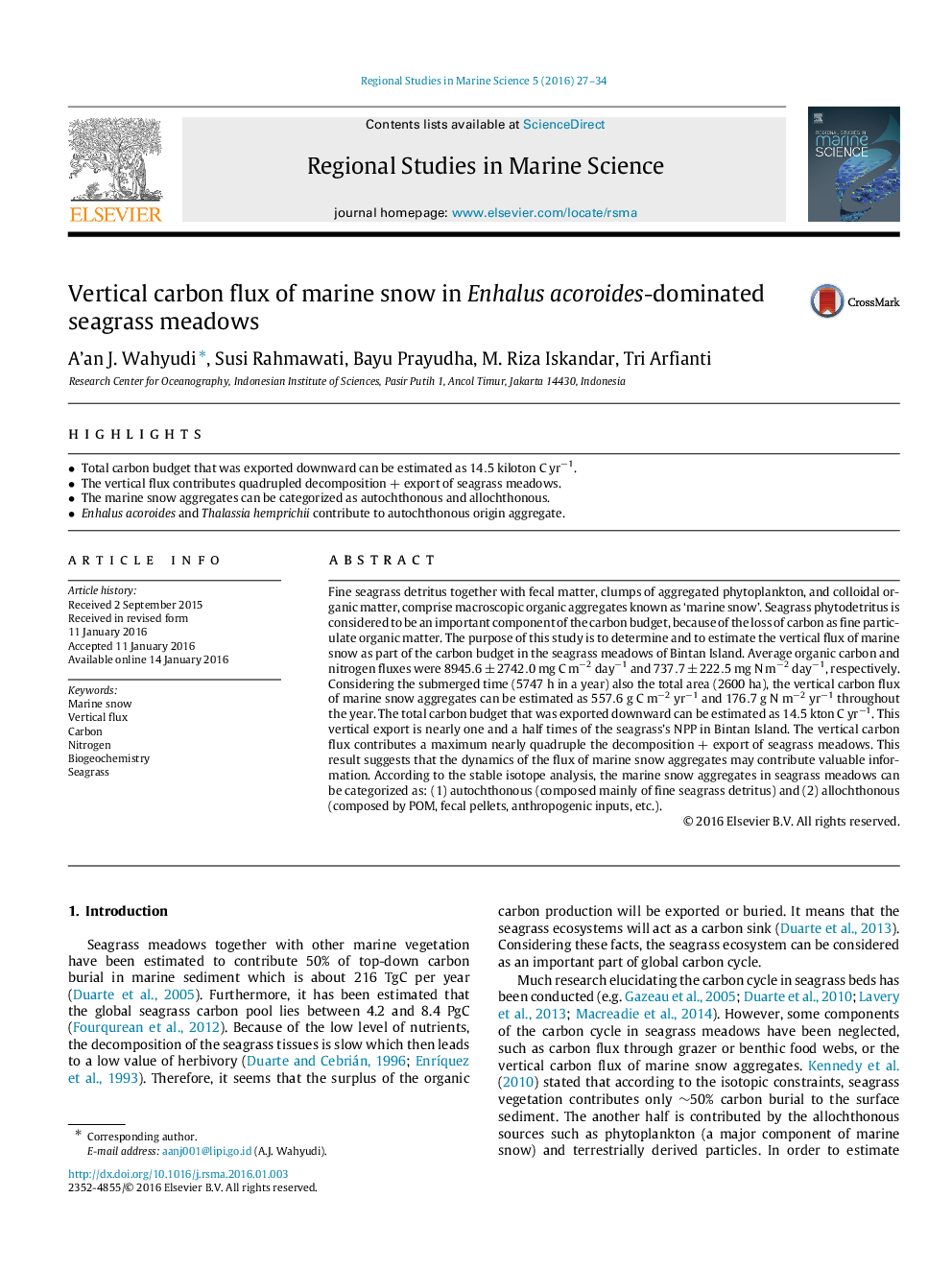| کد مقاله | کد نشریه | سال انتشار | مقاله انگلیسی | نسخه تمام متن |
|---|---|---|---|---|
| 4478173 | 1622822 | 2016 | 8 صفحه PDF | دانلود رایگان |
• Total carbon budget that was exported downward can be estimated as 14.5 kiloton C yr−1.
• The vertical flux contributes quadrupled decomposition + export of seagrass meadows.
• The marine snow aggregates can be categorized as autochthonous and allochthonous.
• Enhalus acoroides and Thalassia hemprichii contribute to autochthonous origin aggregate.
Fine seagrass detritus together with fecal matter, clumps of aggregated phytoplankton, and colloidal organic matter, comprise macroscopic organic aggregates known as ‘marine snow’. Seagrass phytodetritus is considered to be an important component of the carbon budget, because of the loss of carbon as fine particulate organic matter. The purpose of this study is to determine and to estimate the vertical flux of marine snow as part of the carbon budget in the seagrass meadows of Bintan Island. Average organic carbon and nitrogen fluxes were 8945.6±2742.0 mg C m−2 day−1 and 737.7±222.5 mg N m−2 day−1, respectively. Considering the submerged time (5747 h in a year) also the total area (2600 ha), the vertical carbon flux of marine snow aggregates can be estimated as 557.6 g C m−2 yr−1 and 176.7 g N m−2 yr−1 throughout the year. The total carbon budget that was exported downward can be estimated as 14.5 kton C yr−1. This vertical export is nearly one and a half times of the seagrass’s NPP in Bintan Island. The vertical carbon flux contributes a maximum nearly quadruple the decomposition + export of seagrass meadows. This result suggests that the dynamics of the flux of marine snow aggregates may contribute valuable information. According to the stable isotope analysis, the marine snow aggregates in seagrass meadows can be categorized as: (1) autochthonous (composed mainly of fine seagrass detritus) and (2) allochthonous (composed by POM, fecal pellets, anthropogenic inputs, etc.).
Journal: Regional Studies in Marine Science - Volume 5, May 2016, Pages 27–34
